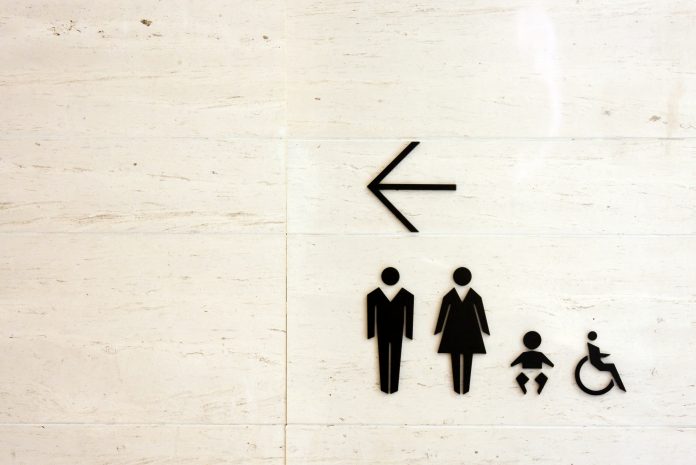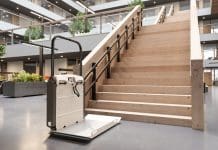About Access discusses the importance of loo locations at the design and construction stage in order to eliminate accessibility issues
We’ve written so much about accessible loos that sometimes when we revisit the subject we wonder where to start, but not for long.
Location is vitally important. You still need the extra door width and the spacious, organised layout, but an accessible loo must be in a place which is accessible to the people who need to use it.
On one occasion we found plans to build one in a basement, with the door opening directly opposite a lift. This raised the question of whether there was enough space for someone with a mobility impairment to enter and leave the loo without being blocked by people waiting outside.
The underground location was only selected because of the wider plan to locate the non-accessible loos at the halfway points on the staircases between floors. So yes, things could have been worse, but generally, the best place to locate an accessible loo is close to the non-accessible loos.
Gender specific loos
We were reminded of this with a recent project which we’ve been working on, assessing plans for an office renovation which covers all aspects of a property across two main storeys, with a smaller intermediate floor.
The plans for the loos are, on the face of it, thorough and impressive. There are loos on the ground floor and the first floor, and they are all accompanied by an accessible WC and shower. All the loos are self-contained cubicles and each loo has its own hand wash basin.
But confusion arose when I asked why none of the loos had been assigned a gender, what the plans were for dealing with that and how the loos would be divided up. The reply was that the loos on the ground floor would be for one sex and the next floor would be for the other sex. That’s just not a good idea.
Most modern, office-based businesses have a degree of diversity within their workforce, and this arrangement means some men and women will have to make their way from their place of work to a different floor just to use the loo. However, the reality could be that some of them won’t bother and will head for the accessible loo instead.
You often see it in bars and restaurants where the accessible loo is on the same floor as the entrance but the non-accessible loos are elsewhere – upstairs or downstairs, or maybe in a far corner of the building at the end of a route obstructed by seats, tables, planters and maybe the odd beer barrel.
When you’ve gotta go, you’ve gotta go, and some customers will always take the quickest and easiest option.
Accessible loo users
It matters because encouraging the use of accessible loos by non-disabled people, however inadvertently, potentially creates an additional obstacle for a disabled person who needs to use that loo.
The people for whom the accessible loo was designed and installed may have to wait until it has been vacated by someone who could use the other loos. For a disabled person, a public convenience becomes less convenient.
However many floors there are in a substantial office building, each level should have its own loos for men and women as well as a unisex option. It’s worth noting that it’s not appropriate to make them all unisex because some women won’t use a loo if it is also used by men, and others can’t use it for faith reasons.
By sitting men’s and women’s loos on different floors you put greater pressure on the availability of accessible loos. That can create unnecessary problems for disabled and non-disabled staff, even to the point of affecting productivity through time lost to longer loo trips and extended waiting times.
The time to address it is when you are designing and constructing the building or carrying out a major refurbishment rather than once the problems come to light.
About Access




![[VIDEO] UK-based firm reveals ‘world’s first’ fully AI-driven architectural project Studio Tim Fu has revealed the 'world's first' fully AI-driven architectural project in Slovenia, developing six luxury villas on the Lake Bled Estate](https://www.pbctoday.co.uk/news/wp-content/uploads/2025/03/Interior-1-studio-tim-fu-218x150.gif)









